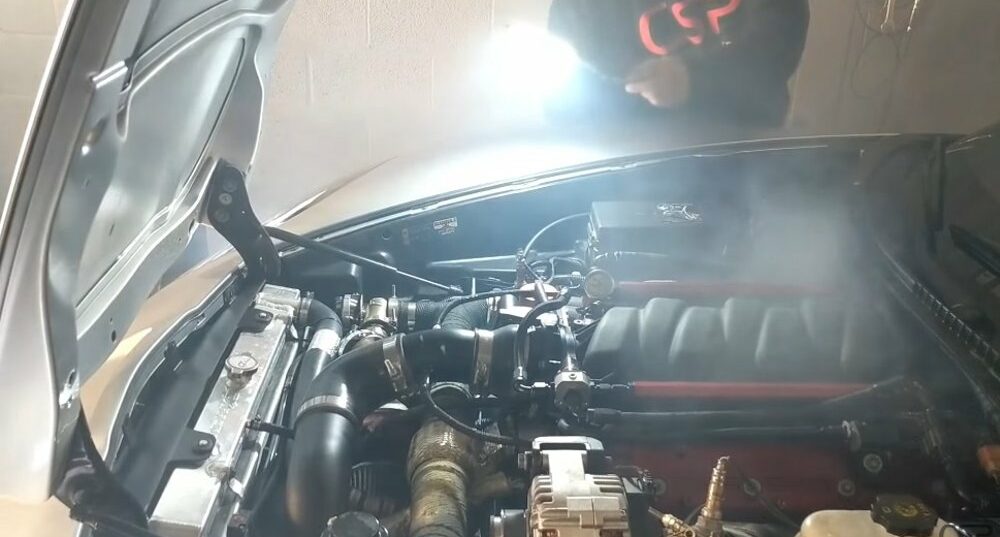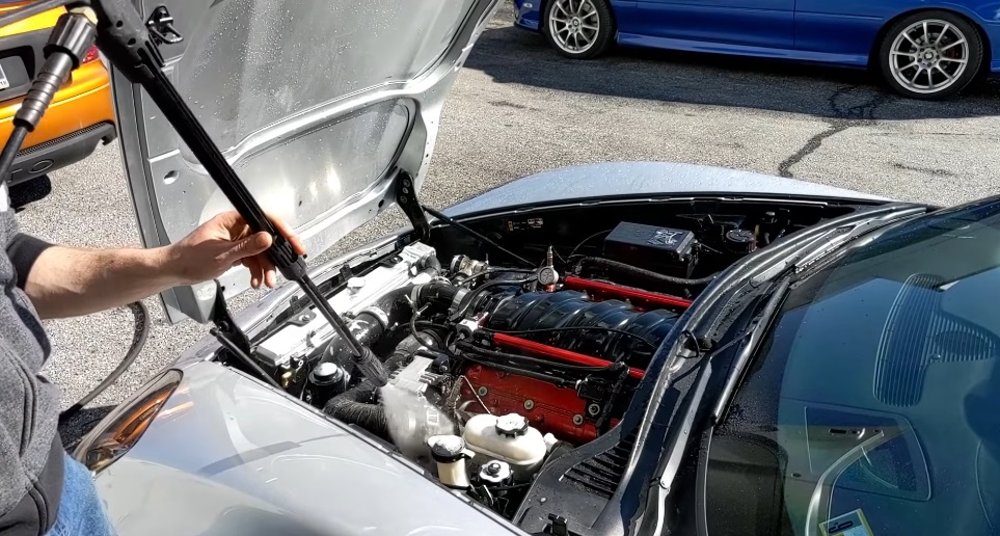Turbo C6 Corvette Z06 Massive Engine Explosion on the Dyno
Shop learns that 26 pounds of boost is too much for the stock Corvette Z06 LS7 intake manifold.
The video above comes to us from the Compete Street Performance YouTube channel and it features a wicked, turbocharged C6 Corvette Z06 on the dyno, laying down more than 1,300 horsepower at the rear wheels. Unfortunately, while working out on the roller, the LS7 engine exploded, blowing flames out of the front-exit exhaust system and setting part of the building on fire.
That fire was quickly extinguished, as was the fire in the engine bay of the Corvette, and there wasn’t a surprisingly minimal amount of damage done to the LS7 for such a violent- looking burst of fire.
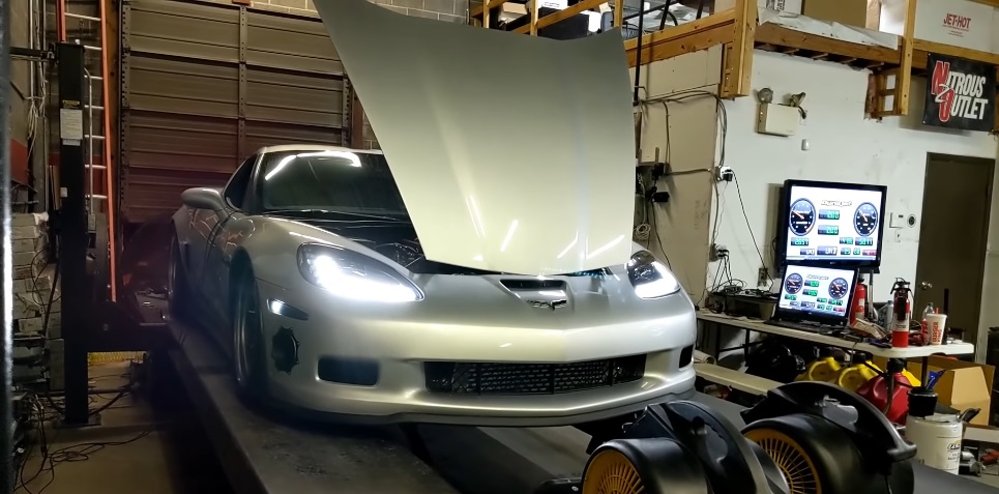
Vehicle Background
When the video begins, the C6 Corvette Z06 named the Silver Bullet is sitting on the dyno with the vehicle owner and shop manager Eric sitting in the driver’s seat. We learn that when it was on the dyno previously, it made 1,326 horsepower and 1,191 lb-ft of torque at the rear wheels. The hope this time is to beat that number, getting up in to the range of 1,450 horsepower.
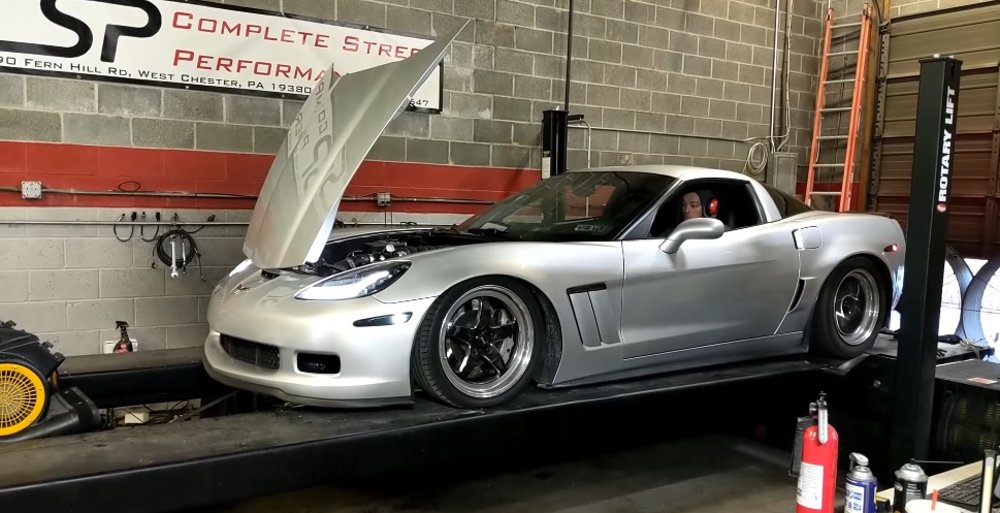
We don’t get any details on this car, but it appears to be running a big single turbo setup on the Corvette’s standard LS7 engine and with more than 1,300 rear wheel horsepower, there are certainly some other upgrades in the engine bay.
One of those upgrades is not an aftermarket intake manifold, which is where everything goes wrong.
Dyno Action
The dyno action begins with a couple low boost pulls, with the silver C6 Corvette making around 850 horsepower and 750 lb-ft of torque, then the boost is cranked up to 26 psi.
During what looks and sounds like a great pull, the engine pops, followed by a gigantic stream of fire pouring from the exhaust outlet near the front tire. After the fire stops spraying from the exhaust, the team runs in to extinguish the flames in the engine bay and on the wall near the dyno.
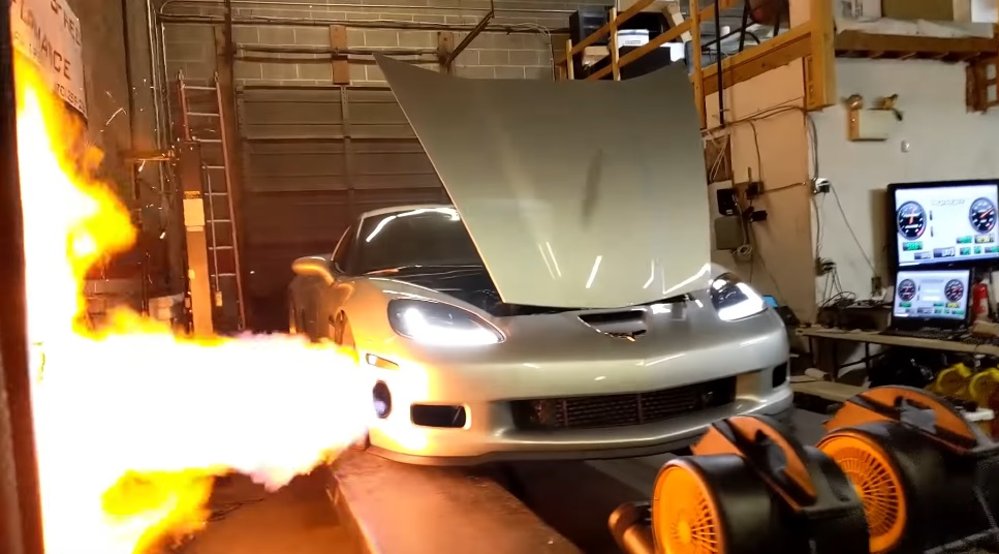
Later on in the video, we get to watch the engine failure again in slow motion, with a detailed explanation of what happened. It appears as though the factory intake manifold disintegrated under big boost. When the manifold exploded, the fuel injectors were unseated, randomly dumping fuel into what is left of the engine, leading to the ball of fire.
It should be noted that on the fiery run, the Corvette made 1,356 horsepower and 997 lb-ft of torque before the engine literally exploded.
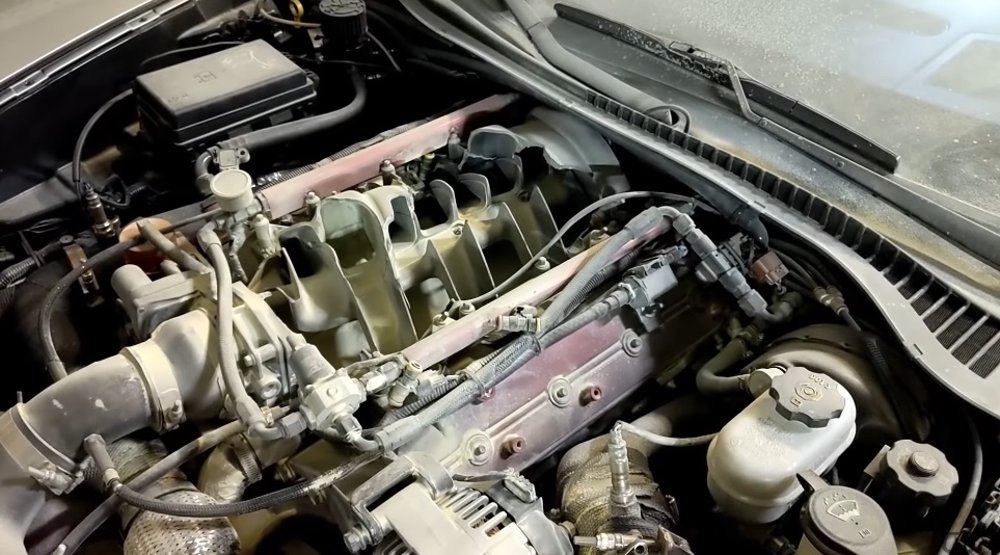
The Aftermath
Once the fire is out, we get a good look at the damage to the engine of the C6 Corvette Z06. The intake manifold is pretty much gone, the injectors are scattered all over the engine bay and everything is coated with fire retardant power from the extinguisher. Fortunately, there are no fluids running out of the bottom, so the team believes that the problem will be relatively easy to fix.
The intake manifold is replaced, the engine is thoroughly cleaned and vacuumed out, the fuel system is pieced back together and less than 24 hours after the massive explosion, the Z06 is back up and running. After burning off the excess dirt in the engine bay, the car is pulled outside where the engine is power-washed and prepared for future action.
Crank up your speakers and enjoy!

